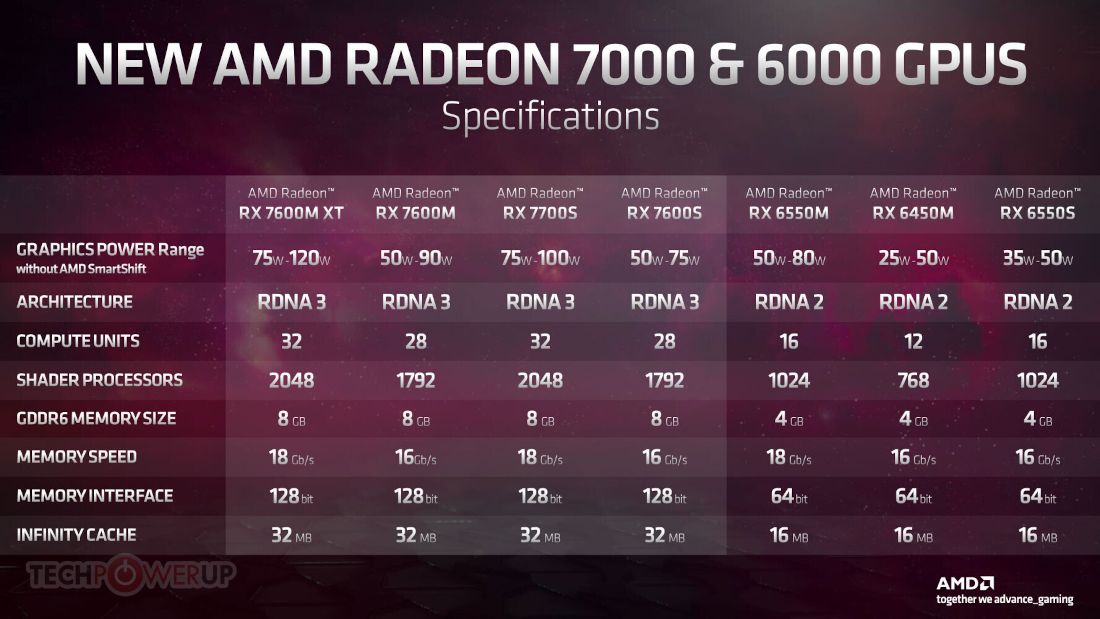
AMD has announced its first line of graphics cards at CES 2023 RDNA 3 laptop-oriented and built on TSMC’s 6nm process comprised of the Radeon RX 7600M XT, RX 7600M, RX 7700S and RX 7600S. These graphics cards, in addition to using the latest generation architecture of the red giant, stand out for their support for rendering (encoding) AV1 by hardware (reproducing it was possible), the support for the second generation of the company’s ray tracing technology and the artificial intelligence acceleration, which points to be important for FSR 3 to show its full power.
The most powerful graph of those shown is the RX 7600M XT, which is located, at least for now, as number one among the models aimed at Radeon laptops. It operates with a TDP that oscillates between 75 and 120 watts and has 32 Computing Units (CU) that supply 2,048 shader processors. It includes 8GB of GDDR6 memory through a 128-bit interface and works at 18Gbps, as well as supporting 32MB of Infinite Cache. According to the data provided by AMD, it is even faster than the desktop-oriented GeForce RTX 3060 (more powerful variant than the one aimed at laptops).
The RX 7600M, RX 7700S and RX 7600S models implement the same configurations at the memory and cache level, but the TDP ones are from 50 to 90 watts for the first, from 75 to 100 watts for the second and from 50 to 75 watts for the last. The number of shader processors are 1,792, 2,048 and 1,792 respectively. Among the laptop models that can be purchased with an RX 7000 laptop graphics card are the Alienware M16 and M18 and ASUS TUF Gaming A16.
The RX 7000/RDNA 3 models shown by AMD are all mid-range. We will see if these graphics manage to convince something more than the RX 7900 XT and the RX 7900 XTX for desktop, which have not fully met the expectations around them, especially in terms of efficiency. Some voices pointed to a presumably immature architect as the origin of the problem.
On the other hand, AMD Radeon is going to have to chop a lot of stone if it wants to scratch something before an NVIDIA that for many years has been strongly established in the segment thanks to the greater adaptability demonstrated by its GPUs and its own technologies, which have become essential for many gamers and professional users.






